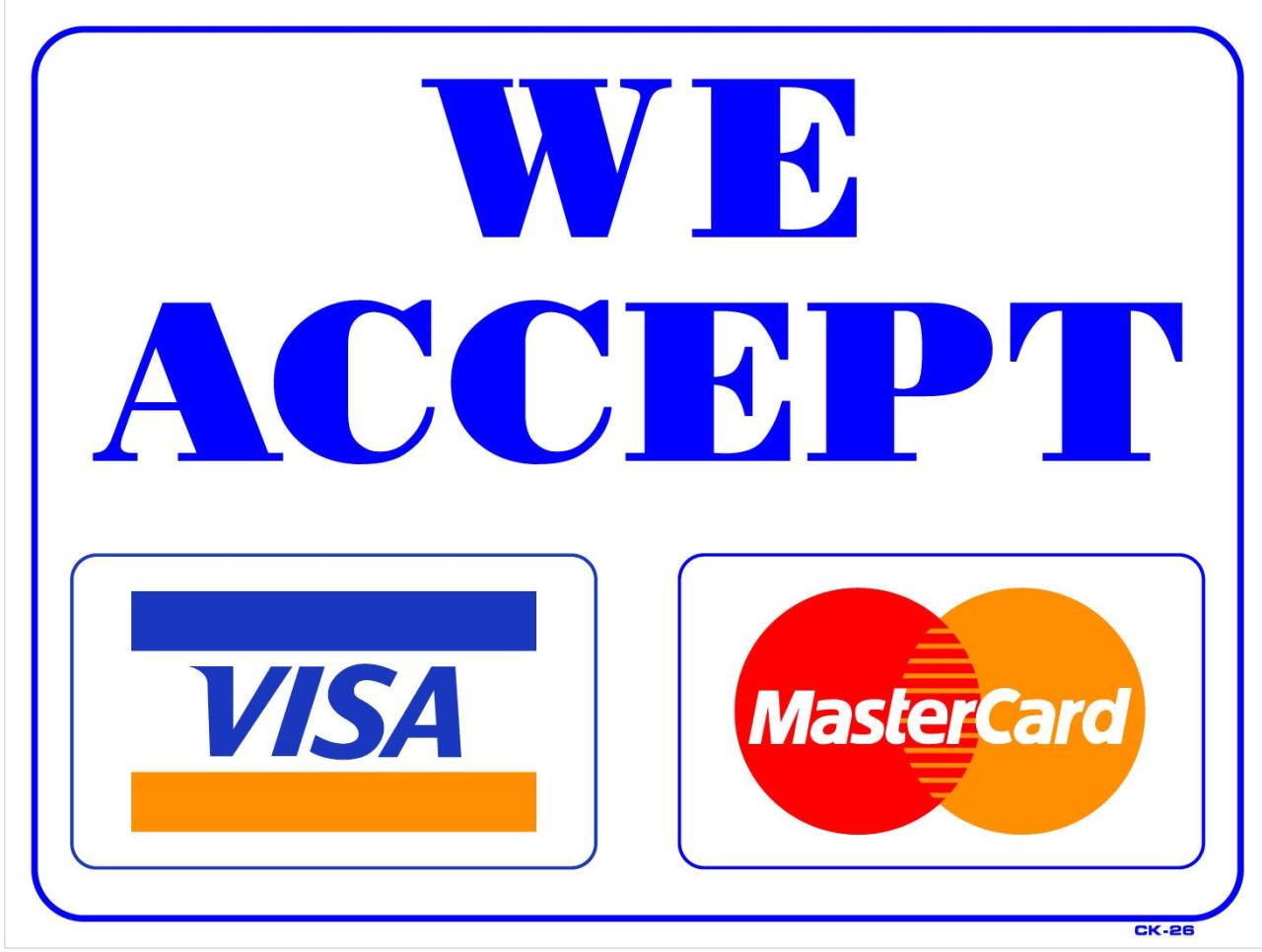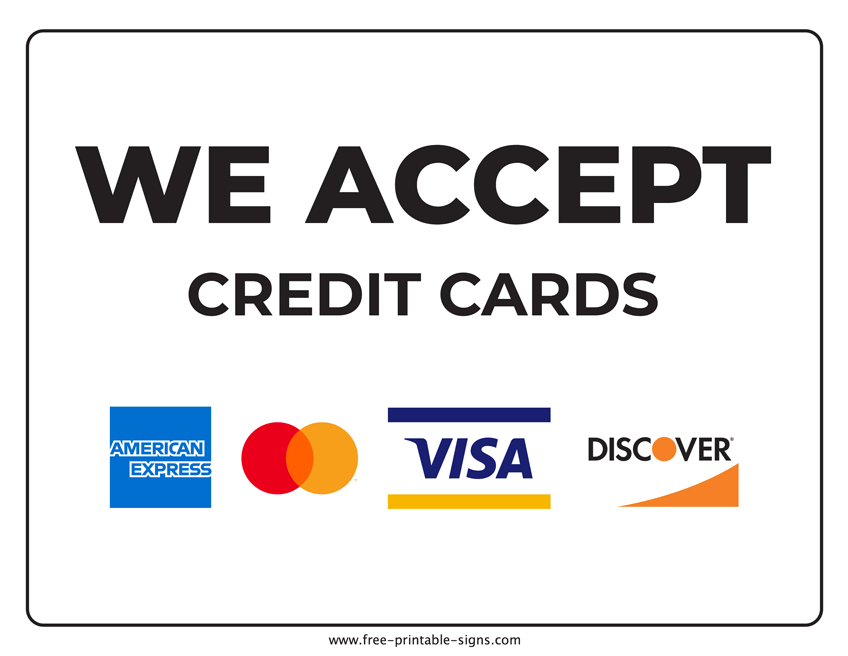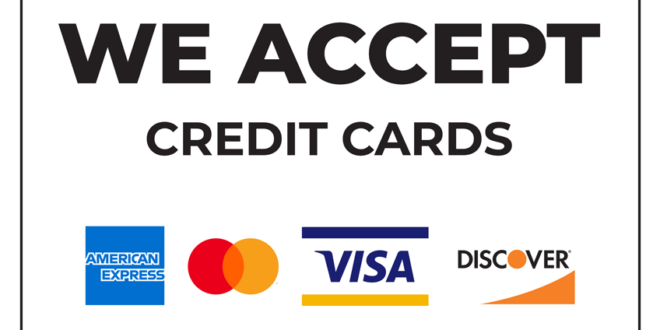How to accept credit card payments for a small business – Accepting credit card payments for your small business is a must-have in today’s digital age. It not only expands your customer base but also enhances convenience and security for your transactions. From understanding the basics of payment processing to choosing the right processor, setting up your system, and managing payments effectively, this guide provides a comprehensive overview of the essential steps involved.
Navigating the world of credit card payments can seem daunting, but with the right knowledge and resources, you can seamlessly integrate this vital aspect into your business operations. This guide will walk you through the key considerations, from selecting a payment processor to ensuring secure transactions, empowering you to confidently accept credit cards and grow your business.
Understanding Payment Processing
Accepting credit card payments is essential for any small business looking to expand its customer base and streamline transactions. But understanding how payment processing works is crucial to make informed decisions about the right payment processor for your needs.
Payment Processing Basics
Payment processing involves several steps that facilitate secure and efficient transactions between customers, merchants, and financial institutions. When a customer makes a purchase using a credit card, the transaction is processed through a network of interconnected entities:
- Merchant Account: A merchant account is a bank account specifically designed for businesses to receive payments from customers. It acts as a conduit for funds to flow from the customer’s credit card to the merchant’s account.
- Payment Processor: A payment processor acts as an intermediary between the merchant and the customer’s bank. It handles the communication and authorization of transactions, ensuring that funds are transferred securely and efficiently.
- Payment Gateway: A payment gateway is a secure platform that facilitates the transmission of payment data between the merchant’s website or point-of-sale system and the payment processor. It encrypts sensitive information, protecting it from unauthorized access.
- Card Networks: Major card networks, such as Visa, Mastercard, Discover, and American Express, establish the rules and regulations for processing credit card transactions. They connect banks and financial institutions, enabling the flow of funds between merchants and customers.
Types of Payment Processors
Various payment processors cater to different business needs and sizes. Understanding the different types of payment processors available can help you choose the best option for your business.
- Traditional Payment Processors: These processors offer comprehensive services, including merchant accounts, payment gateways, and customer support. They are suitable for businesses with high transaction volumes and complex needs.
- Mobile Payment Processors: Designed for mobile-first businesses, these processors enable merchants to accept payments through smartphones or tablets. They are ideal for businesses operating in mobile environments, such as food trucks or pop-up shops.
- Online Payment Processors: These processors focus on online transactions and offer a wide range of features, including recurring billing, subscription management, and fraud prevention tools. They are suitable for businesses with an online presence or those selling products or services digitally.
- Alternative Payment Processors: These processors offer unique payment options, such as peer-to-peer payments, cryptocurrency payments, or buy-now-pay-later solutions. They are suitable for businesses seeking to attract customers with specific payment preferences.
Popular Payment Processors for Small Businesses
Numerous payment processors cater specifically to small businesses, offering a range of features and pricing plans. Some popular examples include:
- Square: A popular choice for small businesses, Square offers a mobile payment processing solution with a simple interface and affordable pricing. It provides a point-of-sale system, online store integration, and analytics tools.
- Stripe: A well-regarded online payment processor, Stripe offers a comprehensive platform for businesses of all sizes. It features a robust API, fraud prevention tools, and global payment capabilities.
- PayPal: A widely recognized online payment platform, PayPal enables businesses to accept payments from customers worldwide. It offers a secure payment gateway, customer support, and a variety of payment options.
- Shopify Payments: Integrated with the Shopify e-commerce platform, Shopify Payments provides a seamless payment processing experience for online businesses. It offers competitive rates, fraud protection, and easy setup.
Advantages and Disadvantages of Payment Processors
Each payment processor comes with its own set of advantages and disadvantages. Carefully evaluating these factors can help you choose the best option for your business:
| Feature | Advantages | Disadvantages |
|---|---|---|
| Pricing | Some processors offer competitive rates and transparent pricing models. | Others may charge high transaction fees or hidden costs. |
| Features | Some processors provide a wide range of features, such as fraud prevention, recurring billing, and analytics tools. | Others may have limited functionality or require additional integrations. |
| Customer Support | Some processors offer excellent customer support with quick response times and helpful resources. | Others may have limited support options or slow response times. |
| Security | Reputable processors prioritize security and employ advanced encryption and fraud detection technologies. | Some processors may have weaker security measures or a history of data breaches. |
| Integration | Some processors seamlessly integrate with popular e-commerce platforms and point-of-sale systems. | Others may require complex integrations or be incompatible with certain systems. |
Choosing the Right Payment Processor
Choosing the right payment processor is crucial for any small business. It’s the backbone of your online sales, allowing you to accept credit card payments from customers. This decision can impact your business’s efficiency, security, and overall profitability.
Key Factors to Consider
When choosing a payment processor, several key factors should be considered. These factors can significantly impact your business’s success and efficiency.
- Fees: Payment processors charge various fees, including transaction fees, monthly fees, and setup fees. These fees can vary greatly, so it’s essential to compare the fees of different processors to find the most cost-effective option.
- Features: Different payment processors offer various features, such as mobile payments, recurring billing, and fraud prevention tools. It’s important to choose a processor that offers the features you need to run your business efficiently.
- Security and Compliance: Security and compliance are essential considerations for any payment processor. Look for processors that are PCI DSS compliant and offer fraud prevention tools to protect your business and your customers.
- Customer Support: You should be able to reach customer support easily and receive timely assistance when needed. Look for processors with 24/7 customer support and a variety of contact methods.
- Integrations: Payment processors should integrate seamlessly with your existing business software, such as your website, accounting software, and inventory management system.
Comparing Features and Pricing
Different payment processors offer varying features and pricing structures. Comparing these aspects can help you find the best fit for your business needs.
- Transaction Fees: Transaction fees are charged for each successful transaction. These fees are usually a percentage of the transaction amount plus a fixed amount per transaction.
- Monthly Fees: Some payment processors charge a monthly fee for their services. This fee may be fixed or variable, depending on the processor and the plan you choose.
- Setup Fees: Setup fees are charged when you first sign up for a payment processor. These fees can vary significantly, so it’s important to compare the setup fees of different processors.
- Other Fees: Some payment processors charge additional fees for specific services, such as international transactions, chargebacks, or refunds.
Security and Compliance
Security and compliance are paramount for any payment processor. They are essential for protecting your business and your customers’ sensitive financial information.
- PCI DSS Compliance: Payment Card Industry Data Security Standard (PCI DSS) is a set of security standards that all payment processors must meet. PCI DSS compliance ensures that your payment processor is handling sensitive data securely.
- Fraud Prevention Tools: Payment processors should offer fraud prevention tools, such as address verification and fraud screening, to help prevent fraudulent transactions.
- Data Encryption: All payment data should be encrypted during transmission and storage. This helps protect your business from data breaches.
Types of Fees
Payment processors charge various fees for their services. Understanding these fees can help you make informed decisions about choosing a payment processor.
- Transaction Fees: These are the most common fees charged by payment processors. They are usually a percentage of the transaction amount plus a fixed amount per transaction.
- Monthly Fees: Some payment processors charge a monthly fee for their services. This fee may be fixed or variable, depending on the processor and the plan you choose.
- Setup Fees: These are charged when you first sign up for a payment processor. They can vary significantly, so it’s important to compare the setup fees of different processors.
- Chargeback Fees: These are charged when a customer disputes a transaction.
- Refund Fees: These are charged when a customer requests a refund.
- International Transaction Fees: These are charged for processing transactions in foreign currencies.
Setting Up Payment Processing

Now that you’ve chosen a payment processor, it’s time to get everything set up so you can start accepting payments. This involves creating a merchant account, integrating a payment gateway, and configuring your settings.
Creating a Merchant Account
A merchant account is a bank account that allows you to accept credit card payments. To create one, you’ll need to provide your payment processor with some information, including your business details, bank account information, and tax ID number. The process typically involves:
- Submitting an application: You’ll need to provide your business information, bank details, and tax ID number.
- Completing a credit check: The payment processor will assess your creditworthiness.
- Signing a merchant agreement: This document Artikels the terms and conditions of your merchant account.
- Waiting for approval: Once your application is approved, you’ll receive your merchant account credentials.
Integrating a Payment Gateway
A payment gateway acts as a secure intermediary between your website or point-of-sale system and your payment processor. It handles the transmission of sensitive payment information and ensures secure transactions. Here’s how to integrate a payment gateway:
- Choose a payment gateway: Your payment processor may offer a built-in gateway, or you can choose a third-party option.
- Set up an account: Create an account with your chosen payment gateway and connect it to your merchant account.
- Install the gateway’s code: This involves adding a few lines of code to your website or point-of-sale system. Your payment processor or gateway provider will typically offer detailed instructions and support.
- Test the integration: Make sure the payment gateway is properly integrated by processing a test transaction.
Configuring Payment Processor Settings, How to accept credit card payments for a small business
Once you’ve set up your merchant account and integrated a payment gateway, you’ll need to configure your payment processor settings to suit your business needs. This includes:
- Setting up payment methods: Choose the types of credit cards you want to accept.
- Setting transaction limits: Define the maximum amount of money you can process per transaction or per day.
- Configuring payment processing fees: Understand and set your payment processing fees based on the transaction volume and chosen payment gateway.
- Defining customer service settings: Determine how you want to handle customer support for payment-related issues.
Testing Your Payment Processing System
Before you go live with your payment processing system, it’s crucial to test everything thoroughly. This ensures that all aspects of the system work as expected and that you can process payments smoothly.
- Process test transactions: Make test purchases using different payment methods and amounts.
- Check for errors: Pay attention to any error messages that may appear during the testing process.
- Review transaction details: Verify that all transaction information is accurate and complete.
Accepting Credit Card Payments: How To Accept Credit Card Payments For A Small Business

Now that you’ve chosen a payment processor and set up your account, it’s time to actually start accepting credit card payments. There are a variety of ways to do this, depending on your business needs and preferences.
Methods of Accepting Credit Card Payments
This section will compare the different methods of accepting credit card payments, including online payments, mobile payments, and in-person payments.
| Method | Description | Examples |
|---|---|---|
| Online Payments | Customers can make purchases on your website or through an online shopping cart. | PayPal, Stripe, Square |
| Mobile Payments | Customers can pay for goods and services using their mobile devices. | Apple Pay, Google Pay, Samsung Pay |
| In-Person Payments | Customers can pay for goods and services in person using a credit card reader. | Square Reader, Clover Mini, PayPal Here |
Advantages and Disadvantages of Each Method
The advantages and disadvantages of each method will be discussed below.
| Method | Advantages | Disadvantages |
|---|---|---|
| Online Payments |
|
|
| Mobile Payments |
|
|
| In-Person Payments |
|
|
Best Practices for Accepting Credit Card Payments Securely
It is important to take steps to protect your business and your customers from fraud. The following best practices will help you do that.
- Use a reputable payment processor.
- Keep your software up to date.
- Use strong passwords and two-factor authentication.
- Train your employees on security best practices.
- Monitor your accounts regularly for suspicious activity.
- Offer secure payment options, such as PCI DSS compliant payment gateways.
- Avoid storing sensitive customer data, such as credit card numbers, on your servers.
- Protect your devices from malware and viruses.
- Use a secure internet connection.
- Educate your customers about security best practices.
Managing Payment Processing
Efficiently managing your payment processing is crucial for a small business’s financial health. It ensures accurate record-keeping, helps control costs, and allows you to address any issues promptly. This section will cover key aspects of managing payment processing, empowering you to streamline operations and maximize profitability.
Reconciling Payment Processing Transactions
Reconciling your payment processing transactions ensures that your financial records accurately reflect the money you’ve received and the fees you’ve paid. This process involves comparing your payment processor’s statements with your own financial records.
Here are some tips for reconciling your payment processing transactions:
- Download your payment processor’s statements regularly. Most payment processors provide detailed statements that Artikel your transactions, fees, and other relevant information. Download these statements regularly and keep them organized.
- Compare the statements to your own financial records. Cross-reference the transactions on your payment processor’s statement with your own sales records, bank statements, and other relevant financial documents. Ensure that the amounts, dates, and other details match.
- Investigate any discrepancies. If you find any discrepancies between your payment processor’s statement and your own records, investigate the issue promptly. This might involve contacting your payment processor, reviewing your sales records, or contacting your bank.
- Reconcile your transactions on a regular basis. Reconciling your transactions on a monthly or even weekly basis can help you identify and address any discrepancies promptly, reducing the risk of errors and ensuring accurate financial records.
Tracking Payment Processing Fees
Payment processing fees are a significant expense for small businesses. It’s crucial to track these fees carefully to understand their impact on your profitability and identify areas for potential savings.
- Identify the different types of fees. Payment processors charge various fees, including transaction fees, monthly fees, and setup fees. It’s essential to understand the specific fees your payment processor charges and how they are calculated.
- Analyze your fee structure. Regularly analyze your payment processing fees to identify trends and potential areas for savings. For instance, you might find that switching to a different payment processor or negotiating better rates can help reduce your overall costs.
- Utilize fee reporting tools. Most payment processors provide reporting tools that allow you to track your fees over time. Use these tools to identify any unusual fees or spikes in costs and to understand how your fees are impacting your profitability.
Resolving Payment Processing Disputes
Payment processing disputes can arise due to various reasons, such as chargebacks, fraudulent transactions, or customer dissatisfaction. Promptly addressing these disputes is crucial to minimize financial losses and maintain customer satisfaction.
- Respond to disputes promptly. When you receive a dispute notification, respond promptly and provide all necessary documentation to support your case. This might include sales receipts, shipping confirmations, or customer communication records.
- Understand the dispute resolution process. Familiarize yourself with your payment processor’s dispute resolution process and the specific timelines involved. This will help you navigate the process effectively and ensure you meet all deadlines.
- Seek professional assistance if needed. If you are facing a complex dispute or require legal advice, consider seeking professional assistance from a lawyer or payment processing expert.
Managing Customer Refunds and Chargebacks
Managing customer refunds and chargebacks effectively is crucial for maintaining customer satisfaction and minimizing financial losses.
- Establish clear refund policies. Develop clear and transparent refund policies that Artikel the conditions under which refunds are granted and the process for requesting a refund. This will help manage customer expectations and minimize disputes.
- Process refunds promptly. When a customer requests a refund, process it promptly and communicate the status of the refund to the customer. This demonstrates your commitment to customer satisfaction and helps build trust.
- Minimize chargebacks. Chargebacks occur when a customer disputes a transaction with their bank. You can minimize chargebacks by providing excellent customer service, ensuring accurate order fulfillment, and addressing customer concerns promptly.
- Monitor your chargeback rate. Track your chargeback rate regularly and identify any trends or patterns. This can help you identify areas where you need to improve your processes and minimize chargebacks.
Security and Compliance

In the realm of accepting credit card payments, safeguarding sensitive customer data is paramount. Security breaches and fraud can severely damage a business’s reputation and financial stability. Understanding and implementing robust security measures is crucial for building trust with customers and ensuring compliance with industry regulations.
Payment Card Industry Data Security Standard (PCI DSS)
The Payment Card Industry Data Security Standard (PCI DSS) is a set of comprehensive security requirements designed to protect cardholder data. This standard, developed by the PCI Security Standards Council, mandates specific security controls for organizations that handle credit card transactions. It Artikels various requirements that businesses must adhere to, including:
- Building and maintaining a secure network.
- Protecting cardholder data.
- Managing vulnerabilities.
- Implementing strong access control measures.
- Regularly monitoring and testing security systems.
Compliance with PCI DSS is not optional. Businesses that fail to meet these requirements face significant penalties, including fines, brand damage, and potential loss of payment processing privileges.
Security Measures for Small Businesses
Small businesses can implement several security measures to protect customer data and prevent fraud. These measures include:
- Using a PCI DSS-compliant payment gateway: A payment gateway acts as a secure intermediary between your website and the payment processor, encrypting sensitive data during transmission.
- Employing strong passwords and multi-factor authentication: Strong passwords with a combination of upper and lowercase letters, numbers, and special characters, along with multi-factor authentication, add an extra layer of security to your accounts.
- Regularly updating software and security patches: Keeping your software up to date ensures that you have the latest security features and bug fixes to protect against known vulnerabilities.
- Educating employees about security best practices: Employees should be trained on how to handle customer data responsibly, identify potential threats, and report suspicious activities.
- Implementing a robust fraud prevention system: Utilize tools that monitor transactions for unusual patterns, suspicious activity, and potential fraud attempts.
Final Summary
By following the steps Artikeld in this guide, you’ll be well-equipped to accept credit card payments for your small business. From understanding the fundamentals of payment processing to implementing secure practices, you’ll have the knowledge and tools to navigate this essential aspect of modern commerce. Remember, staying informed about industry trends and evolving security measures is crucial for maintaining a successful and secure payment system. As your business grows, you can explore more advanced features and solutions to optimize your payment processing experience.
Question Bank
What are the different types of credit card processing fees?
Common fees include transaction fees (a percentage of each transaction), monthly fees, statement fees, and chargeback fees.
How do I choose the right payment processor for my business?
Consider factors like transaction fees, monthly fees, features offered, security measures, customer support, and integration with your existing systems.
What are some tips for preventing credit card fraud?
Implement security measures like fraud detection software, two-factor authentication, and regular security audits. Educate your staff on recognizing suspicious transactions and fraud prevention practices.
 Norfolk Publications Publications ORG in Norfolk!
Norfolk Publications Publications ORG in Norfolk!

